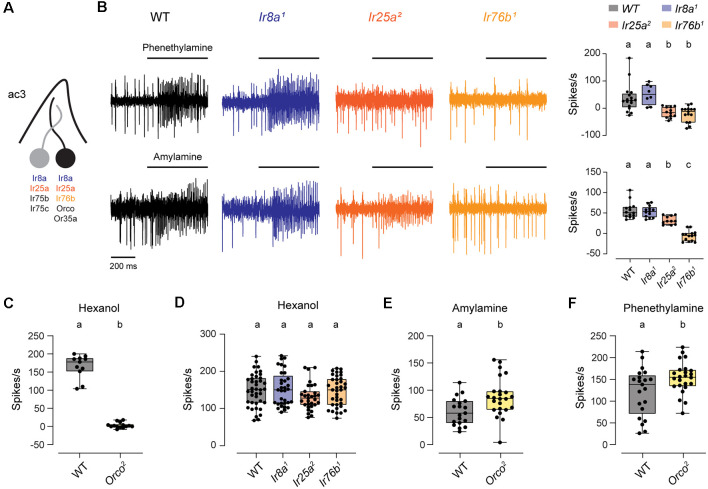Figure 3.
The ac3B ORNs utilize IR and OR receptors. (A) Diagram of an ac3 sensillum, showing receptor expression in each ORN. The ac3B ORN is in black. (B) Representative traces of responses to phenethylamine and amylamine in ac3 sensilla from WT, Ir8a1, Ir25a2, and Ir76b1 flies. Right, box plots overlaid with individual data points (phenethylamine: n = 17 WT, 8 Ir8a1, 12 Ir25a2, and 15 Ir76b1 sensilla; amylamine: n = 14 WT, 13 Ir8a1, 11 Ir25a2, and 14 Ir76b1 sensilla). (C) Box plot of ac3 responses to hexanol in WT and Orco2 flies (n = 11 WT and 14 Orco2 sensilla). (D) Box plot of ac3 responses to hexanol in WT flies and IR co-receptor mutants (n = 40 WT, 33 Ir8a1, 31 Ir25a2, and 37 Ir76b1 sensilla). (E,F) Box plot of responses to amylamine (E) and phenethylamine (F) in WT flies and Orco2 mutants (amylamine: n = 19 WT and 24 Orco2 sensilla; phenethylamine: n = 21 WT and 24 Orco2 sensilla). Genotypes that are significantly different are indicated with different letters. OR, Odorant Receptor; IR, Ionotropic Receptor.

